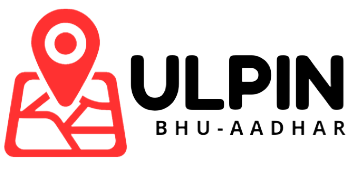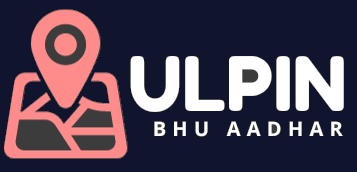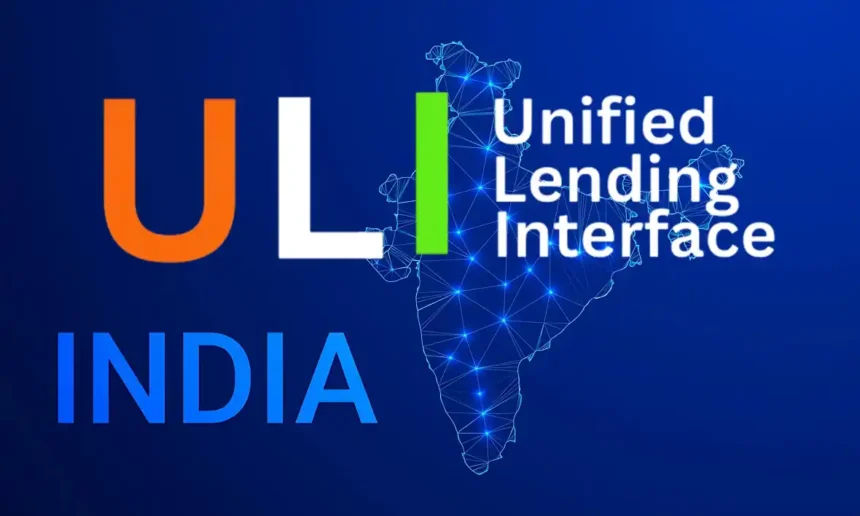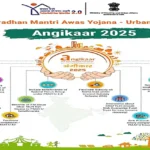The Indian financial services sector stands at the cusp of another transformative revolution. Following the phenomenal success of the Unified Payments Interface (UPI), which redefined digital payments in India, the Reserve Bank of India (RBI) has introduced the Unified Lending Interface (ULI) to revolutionize the lending landscape.
This groundbreaking initiative promises to make credit accessible, transparent, and efficient for millions of Indians, particularly those in underserved segments.
What is the Unified Lending Interface (ULI)?
The Unified Lending Interface (ULI) is a comprehensive digital platform designed as a “Credit DPI for India by India” that enables frictionless credit delivery through seamless data flows. This consent-based platform simplifies the flow of information and reduces paperwork, making the process of obtaining credit significantly easier for borrowers.
At its core, ULI functions as a digital infrastructure that connects various stakeholders in the lending ecosystem through standardized protocols. The platform facilitates the flow of digital information, such as land records from various states, directly to lenders using an open architecture with Application Programming Interfaces (APIs), allowing financial institutions to connect in a ‘plug and play’ model.
Think of ULI as a sophisticated data highway that eliminates the traditional bottlenecks in loan processing. Instead of borrowers running from office to office collecting documents, ULI creates a unified ecosystem where verified data flows seamlessly between government databases, credit bureaus, and lending institutions.
How Does ULI Work? Understanding the Mechanism
The Unified Lending Interface operates on a multi-layered architecture that brings together diverse data sources under one umbrella. The system works through several interconnected components that create a comprehensive lending ecosystem.
Data Integration and Flow
ULI facilitates the flow of digitized financial and non-financial data, including land records, from multiple service providers to lenders. The platform aggregates information from various government databases, including property records, income tax returns, GST filings, and other relevant financial documents. This comprehensive data integration eliminates the need for borrowers to manually submit multiple documents from different sources.
Consent-Based Architecture
The platform operates with a strong focus on data privacy, ensuring that borrower information is collected only after their explicit consent. This consent-based system protects sensitive financial data from unauthorized access. Users maintain complete control over their data sharing preferences, deciding which information to share with which lender and for what purpose.
Real-Time Processing
The system enables real-time data verification and processing, significantly reducing the time required for loan approvals. When a borrower applies for credit, ULI instantly verifies the submitted information against multiple databases, providing lenders with authenticated data for quick decision-making.
API-Driven Connectivity
The platform uses open APIs that allow various financial institutions, fintech companies, and other stakeholders to integrate their systems seamlessly. This creates an interoperable ecosystem where different players can participate without significant technological barriers.
Key Advantages of ULI
The implementation of ULI brings numerous benefits to all stakeholders in the lending ecosystem, from individual borrowers to large financial institutions.
Enhanced Financial Inclusion
ULI aims to benefit a wide range of segments, including individuals seeking personal loans, home loans, or vehicle loans. The platform particularly focuses on making credit accessible to small and rural borrowers who traditionally faced challenges in accessing formal financial services. By digitizing the entire process and reducing documentation requirements, ULI opens doors for underserved populations.
Reduced Processing Time
Traditional loan processing can take weeks or even months due to manual verification processes and document collection requirements. ULI dramatically reduces this timeline by enabling instant data verification and automated processing of applications. What previously took weeks can now be accomplished in days or even hours.
Lower Operational Costs
For lenders, ULI significantly reduces operational costs associated with loan processing. The automated data collection and verification processes eliminate the need for extensive manual intervention, reducing both time and human resource requirements. These cost savings can be passed on to borrowers in the form of better interest rates and reduced processing fees.
Improved Data Accuracy
Manual data entry and document submission often lead to errors and discrepancies that can delay loan processing. ULI’s direct integration with government databases ensures that the information used for loan decisions is accurate, verified, and up-to-date.
Enhanced Transparency
The platform creates a transparent ecosystem where borrowers can track their application status in real-time. Lenders also benefit from complete visibility into the borrower’s financial profile, enabling better risk assessment and pricing decisions.
Standardization Across Institutions
ULI creates standardized protocols and processes across different lending institutions, making it easier for borrowers to compare options and for lenders to maintain consistent practices.
Potential Disadvantages and Challenges
While ULI represents a significant advancement in digital lending, several challenges and potential disadvantages need consideration.
Digital Divide Concerns
India still has a significant population with limited digital literacy and access to technology. Rural areas, where ULI aims to increase financial inclusion, may face challenges in adopting and effectively using the digital platform. This could potentially exclude the very segments that the system aims to serve.
Data Privacy and Security Risks
Although ULI implements consent-based data sharing, the centralized collection and processing of vast amounts of personal and financial data create potential security vulnerabilities. Cyber attacks, data breaches, or unauthorized access could have severe consequences for millions of users.
Technology Infrastructure Dependencies
The success of ULI heavily depends on robust technological infrastructure, including internet connectivity, server reliability, and system integration capabilities. Any technical failures or downtime could disrupt the entire lending ecosystem.
Regulatory and Compliance Complexities
The platform must navigate complex regulatory frameworks across different states and sectors. Ensuring compliance with various data protection laws, banking regulations, and state-specific requirements presents ongoing challenges.
Market Concentration Risks
ULI’s efficiency might lead to market concentration, where larger, technology-enabled lenders gain disproportionate advantages over smaller, traditional institutions. This could potentially reduce competition in certain market segments.
Over-reliance on Algorithmic Decisions
While automated processing offers speed and efficiency, it may also lead to over-reliance on algorithmic decision-making, potentially missing nuanced factors that human underwriters might consider in loan approvals.
ULI vs UPI: Drawing Parallels in Digital Financial Infrastructure
Building on the success of UPI, ULI represents the next evolution in India’s digital financial infrastructure. The relationship between these two platforms demonstrates India’s systematic approach to digitizing financial services.
UPI revolutionized payments by creating a unified interface that connected different banks and payment service providers, enabling seamless money transfers through simple mobile applications. Similarly, ULI aims to create a unified interface for lending, connecting borrowers, lenders, and data providers in a seamless ecosystem.
Both platforms share common design principles: interoperability, standardization, and inclusivity. UPI made digital payments accessible to users regardless of their bank or the recipient’s bank, while ULI aims to make credit accessible regardless of the borrower’s profile or the lender’s platform.
The success of UPI, which processes billions of transactions monthly, provides a strong foundation for ULI’s implementation. The digital infrastructure, regulatory framework, and user acceptance developed through UPI create favorable conditions for ULI’s adoption.
However, while UPI deals with instant transactions, ULI involves more complex processes, including data verification, risk assessment, and regulatory compliance. This makes ULI’s implementation more challenging but potentially more transformative for the Indian economy.
Implementation Timeline and Current Status
RBI Governor Shaktikanta Das announced the launch of ULI as a new digital platform designed to simplify the lending process. The platform is being rolled out in phases, with initial focus on specific segments and gradual expansion to cover the entire lending ecosystem.
The implementation strategy involves collaboration between the RBI, commercial banks, fintech companies, and technology service providers. Pilot programs are being conducted to test the platform’s effectiveness and identify areas for improvement before full-scale deployment.
Impact on Different Stakeholders
For Individual Borrowers
ULI transforms the borrowing experience by eliminating paperwork, reducing processing time, and providing transparent access to credit. Small business owners, farmers, and individuals seeking personal loans will particularly benefit from simplified procedures and faster approvals.
For Financial Institutions
Banks and NBFCs gain access to comprehensive borrower data, enabling better risk assessment and pricing strategies. The standardized processes reduce operational costs and improve efficiency in loan origination and management.
For the Economy
At a macro level, ULI is expected to increase credit flow to underserved segments, supporting economic growth and financial inclusion. The platform has the potential to make a sea change in India’s lending landscape by improving credit accessibility and reducing informal lending dependencies.
Future Prospects and Evolution
The Unified Lending Interface represents just the beginning of India’s digital lending transformation. As the platform matures, we can expect integration with emerging technologies like artificial intelligence for better risk assessment, blockchain for enhanced security, and machine learning for personalized lending products.
The success of ULI could serve as a model for other countries looking to digitize their lending ecosystems. India’s experience with digital public infrastructure, from Aadhaar to UPI to ULI, positions the country as a global leader in financial technology innovation.
Conclusion
The Unified Lending Interface marks a pivotal moment in India’s financial services evolution. By creating a standardized, transparent, and efficient lending ecosystem, ULI has the potential to democratize access to credit while maintaining the highest standards of data privacy and security.
While challenges exist, particularly around digital literacy and infrastructure requirements, the platform’s benefits far outweigh its limitations. As ULI continues to evolve and expand, it promises to create a more inclusive financial ecosystem where credit decisions are based on comprehensive data rather than traditional barriers.
The success of UPI provides a strong foundation for ULI’s implementation, and early indicators suggest that India is well-positioned to lead another global revolution in financial services. For borrowers, lenders, and the broader economy, ULI represents not just technological advancement but a fundamental shift toward a more accessible and efficient financial future.
As we witness this transformation unfold, ULI stands as a testament to India’s commitment to leveraging technology for inclusive growth and financial empowerment. The journey ahead will require continued collaboration between all stakeholders, but the destination promises a more equitable and efficient lending landscape for all Indians.









